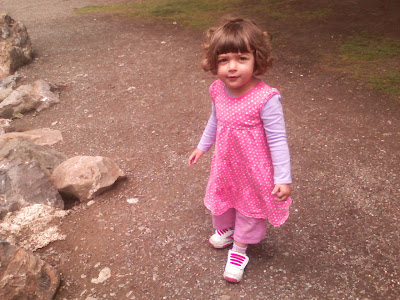
On my first visit to Panama, I stayed at the Las Vegas Hotel in El Cangrejo and I walked everywhere around the city. I wore an old messenger bag, made of a semi-waterproof, neoprene like material. It kept my belongings dry in Panama's tropical rains, and was easy to wear. It fit snugly against my back and I could spin it around to take things out without having to take the bag off. Very handy.
In the evening of the second or third day, I noticed that I had developed a bad rash across my back, consisting of horribly itchy bumps looking like mosquito bites. In fact I thought maybe the hotel bed was infested with bedbugs, or a mosquito had feasted on me during the night. I tried applying a cortisone cream and the rash got worse. It was driving me out of my mind.
I talked to a few Panamanian friends but they could not help (have you ever noticed that Panamanians hardly sweat, even on the hottest days?!). I did some research online and finally I realized that I had heat rash. I had never experienced this before. The waterproof bag resting against my back (combined with the constant high humidity in Panama) had caused my back to perspire excessely. Because no air was reaching my back, the sweat was trapped, and that in turn trapped further sweat beneath the skin, causing the rash.
All told I've had heat rash four times in Panama, each time within a few weeks after my arrival.
WebMD describes heat rash thus:
Heat rash -- also called prickly heat or miliaria -- is a common condition in which areas of the skin itch intensely and often feel prickly or sting due to overheating. Heat rash looks like tiny bumps surrounded by a zone of red skin. It usually occurs on clothed parts of the body, such as the back, abdomen, neck, upper chest, groin, or armpits and goes away on its own within a few days. In severe forms, however, heat rash can interfere with the body's heat-regulating mechanism and cause fever, heat exhaustion, and even death.Heat rash occurs most often in hot, humid conditions. It's most common in infants. Active people, newborns in incubators, and bedridden patients with fever also are more likely to get heat rash.Heat rash begins with excessive perspiration, usually in a hot, humid environment. The perspiration damages cells on the surface of the skin, forming a barrier and trapping sweat beneath the skin, where it builds up, causing the characteristic bumps. As the bumps burst and sweat is released, you may feel the prickly, or stinging, sensation that gives this condition its common name.
Preventing Heat Rash
Wear light weight, light colored, loose-fitting clothing. Heat rash often occurs in the groin, armpits or elbow creases, under your watch (and under the breasts or along the bra line for women), and believe me, it's no fun.
If you are staying in Panama long term, you will adjust to the humidity and you won't sweat so much. But for short term visitors and those newly arrived, beware of heat rash. If you wear a backpack or even carry a purse, move it around. Don't let it rest against one part of your body for too long. Even if it's raining, don't wear a jacket that will cause you to perspire excessively (stick with a light shirt and an umbrella).
If you are outside and you begin to feel very hot, or you are aware that you are perspiring excessively, go back to your hotel to cool off. Drink plenty of fluids. When you return to your hotel, take a cool or cold shower immediately, dry your skin thoroughly, and allow your skin to be cooled by the air conditioner. A fan alone may not be sufficient. An air conditioner will provide cooling and will also dry the air, reducing the humidity.
Treating Heat Rash Once You've Got It
The only treatment for heat rash is to wash the skin clean with cool water, dry it gently, and keep it exposed to air (preferably cool, dry air).
Do not apply any ointments or creams, as these will block the skin pores and keep the sweat trapped beneath the skin. When you are outside, apply sunscreen to those areas exposed to the sun, and when you return to your hotel, wash it off and let the skin dry and cool. If you've already got heat rash, stay out of the sun as much as possible, and don't drink alcohol excessively, as that may make it worse.
Certain powders, like Gold Bond medicated powder or corn starch, may provide temporary relief from the itching and pain, but do not leave the powder on. Once the itching fades, wash the powder off with cool water and let the skin dry and get air.
In my experience, heat rash properly treated fades within two or three days.
Have you had heat rash? What was your experience with it? How do you avoid it now?




